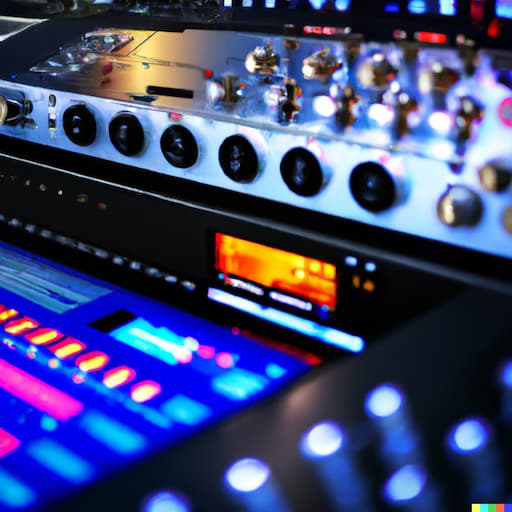
Hip Hop Mastering Secrets: Crafting Powerful Drums and Crystal Clear Vocals
Mastering is the final step in music production and plays a vital role in achieving a polished, professional sound. In hip hop, mastering is particularly essential to ensure punchy drums and balanced vocals. In this article, we'll explore techniques and tips for mastering hip hop music, focusing on enhancing the drum and vocal elements to create a powerful, polished track.

1. Start with a Good Mix
Before diving into mastering, it's crucial to have a solid mix. Spend time perfecting the balance between instruments and vocals, making sure that each element has its own space in the mix. A well-mixed track will make the mastering process much smoother and help you achieve a professional sound.
2. Enhancing the Drums
Punchy drums are a hallmark of hip hop music. To achieve this during the mastering process, you'll need to focus on the following techniques:
- EQ: Apply subtle EQ adjustments to emphasize the kick and snare. Boost the low-end frequencies of the kick drum (around 50-100 Hz) and the mid-range frequencies of the snare (around 200-250 Hz) to give them more presence and power.
- Compression: Use compression to control the dynamics and add punch to the drums. Apply a fast attack and release time to maintain the transient impact of the kick and snare, while evening out their levels.
- Parallel Compression: This technique involves blending a heavily compressed version of the drum track with the original, uncompressed track. Parallel compression can add extra punch and sustain to the drums without over-compressing them.
3. Balancing the Vocals
In hip hop, vocals are the centerpiece of the track and must be clear, present, and well-balanced. To achieve this in the mastering stage, consider these techniques:
- EQ: Use EQ to make subtle adjustments to the vocal frequencies, ensuring that they are clear and prominent in the mix. Cut any problematic frequencies (usually in the low-mid range) that may cause muddiness or mask other elements. Slight boosts in the upper mid-range (around 2-5 kHz) can add clarity and presence to the vocals.
- De-essing: De-essers can help control harsh sibilance (the "s" and "sh" sounds) in the vocals, making them smoother and more polished.
- Stereo Imaging: While it's common for vocals to be centered in the mix, you can use stereo imaging tools to subtly widen the vocals, creating a sense of space and depth without compromising their focus.
4. Set Up Your Monitoring Environment
A reliable monitoring environment is essential for making accurate mastering decisions. Here are some tips for optimizing your home studio:
- Acoustic Treatment: Invest in bass traps, absorption panels, and diffusers to minimize room reflections and standing waves.
- Monitor Placement: Position your studio monitors at ear level and create an equilateral triangle with your listening position.
- Monitor Calibration: Calibrate your monitor levels to ensure an accurate representation of the frequency spectrum.
5. Overall Mastering Tips
In addition to enhancing drums and vocals, consider these general tips for mastering hip hop music:
- Loudness: Hip hop music often has a high perceived loudness, but be cautious not to over-compress or limit the track, which can result in a loss of dynamics and impact.
- Consistency: Make sure your track maintains a consistent sound across various playback systems. Listen to your mastered track on different speakers and headphones to ensure it translates well.
- Reference Tracks: Use reference tracks from similar hip hop artists to compare your mastering decisions and ensure your track stands up to professional releases.

In conclusion, mastering hip hop music requires a focus on achieving punchy drums and balanced vocals while maintaining overall track consistency and dynamics. By applying these techniques and tips, you can polish your hip hop tracks and deliver a powerful, professional sound.
Want more great audio tips? Checkout other articles from our blog!